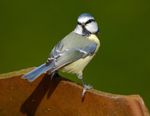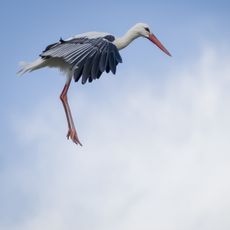Our bird map is shrinking
Less adaptable birds are becoming less common according to a new BTO map


The distribution of some ‘common' British birds seems to be shrinking to reserves, SSSIs or where a landowner makes specific efforts to create the right habitat, writes Kate Green.
This is the dominant trend emerging from the BTO's Bird Atlas 2007-11, published last month, and backed up by the recent 14th annual State of the UK's Birds report by the RSPB, BTO and WWT. No longer is the whinchat or the willow tit a familiar sight in the wider countryside; yellow wagtails have almost disappeared from Wales and the corn bunting is extinct in Ireland.
Adaptability seems to be key. The snipe is declining, yet another wetland bird, the avocet, which colonised the East Anglian coast when it was flooded in the Second World War, has expanded its range more than 17-fold over 40 years. ‘Waders generally are doing really badly, but the avocet breeds mainly on reserves where it may be protected from predators,' explains Dawn Balmer, lead author on the Bird Atlas. ‘They are skinny little birds and our milder winters help them.
Oyster catchers are also adapting-we're even finding them nesting on roofs-and the little ring plover is doing well. They're susceptible to flooding but they like managed land.' She adds: ‘There has been a lot of habitat creation in the last 10 years, and this is helping to stabilise the range of some birds, like the skylark, but many environmental farming schemes are not, as yet, making a difference to actual numbers.'
* Subscribe to Country Life today and save up to 40%
* Follow Country Life magazine on Twitter
Sign up for the Country Life Newsletter
Exquisite houses, the beauty of Nature, and how to get the most from your life, straight to your inbox.
Country Life is unlike any other magazine: the only glossy weekly on the newsstand and the only magazine that has been guest-edited by HRH The King not once, but twice. It is a celebration of modern rural life and all its diverse joys and pleasures — that was first published in Queen Victoria's Diamond Jubilee year. Our eclectic mixture of witty and informative content — from the most up-to-date property news and commentary and a coveted glimpse inside some of the UK's best houses and gardens, to gardening, the arts and interior design, written by experts in their field — still cannot be found in print or online, anywhere else.
-
 A well-connected rural playground with 23 acres on the edge of the South Downs National Park
A well-connected rural playground with 23 acres on the edge of the South Downs National ParkOld House Farm is an impressive family home with a wealth of amenities that would inspire any rural passion.
By Arabella Youens Published
-
 The UK gets its first ‘European stork village’ — and it's in West Sussex
The UK gets its first ‘European stork village’ — and it's in West SussexAlthough the mortality rate among white storks can be up to 90%, the future looks rosy for breeding pairs in southern England.
By Rosie Paterson Published
